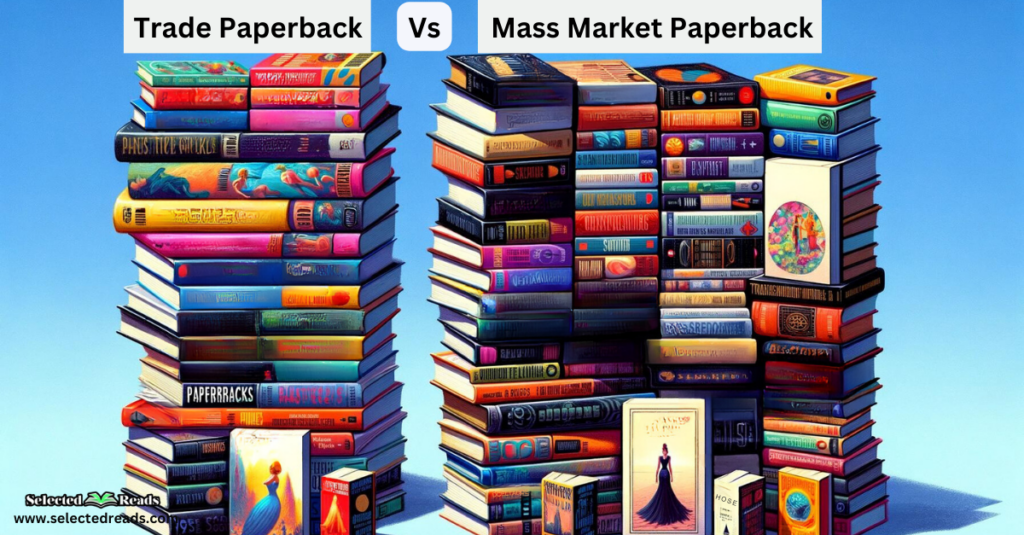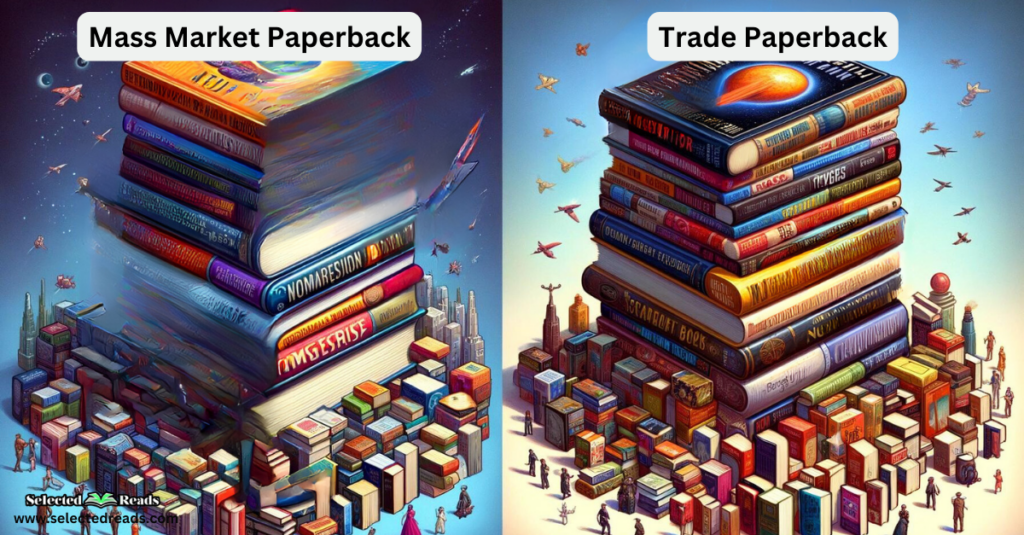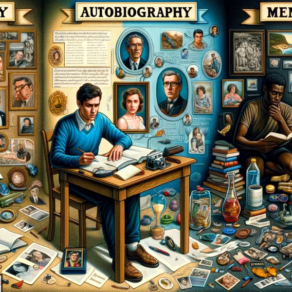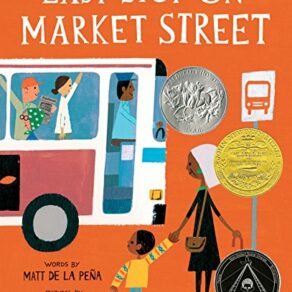This post aims to unravel the nuances that distinguish mass market paperbacks from their larger trade paperback cousins. We’ll explore the economic, aesthetic, and cultural factors that have shaped these formats, offering a comprehensive look at why each holds a unique appeal for readers, publishers, and authors alike.
More specifically, we’ll cover the following points:
- What exactly a mass market paperback is and how it differs from its better-known cousin, the trade paperback.
- The fascinating history behind the mass market format, tracing its roots back to the 1930s.
- Why mass market paperbacks became the darlings of newsstands and drug stores, and how their eye-catching covers played a role in their popularity.
- A conversation around the ‘degeneracy’ associated with mass market books that even caught the attention of the U.S. House of Representatives back in the ’50s.
What is a Mass Market Paperback?
According to Collins dictionary, mass market paperbacks are relatively inexpensive paperbound books, typically measuring around 4 x 7 inches. You can find them not just in bookstores but in supermarkets, newsstands, and even drug stores. Their compact size often earns them the nickname “pocket books.” They are designed for mass consumption, fitting comfortably in your purse or back pocket, making them an excellent on-the-go reading option. And yes, the text font is smaller, but hey, that’s the trade-off for portability.
History and Evolution
Now, the concept of cheap, portable books isn’t a new one. The 19th-century had yellowbacks and dime novels, which were pretty similar in function. However, the mass-market paperback as we know it came into its own in the 1930s in America.
Initially, these books were reprints of popular hardcover titles, but publishers soon started focusing on fresh works that hadn’t seen the light of day in hardcover format. Fun fact: mass-market paperback publishers weren’t just pushing pulp fiction; they also produced more literary works. This dual focus had a broad appeal, tapping into various market segments.
Where You’ll Find Them and Why They’re Popular
One of the game-changing aspects of mass-market paperbacks was their distribution strategy. These books invaded spaces where periodicals were sold, like newsstands and drug stores, effectively reaching a wider audience. This was all thanks to Robert DeGraff, the founder of Pocket Books, who revolutionized how these books were sold.
And let’s talk about those covers for a moment. They became increasingly eye-catching, especially when sales slumped in the late 1940s. Everything from the sex appeal to violent imagery was amped up. So much so, that they even attracted the scrutiny of the U.S. House of Representatives in 1952, who went on to form a committee to investigate these books’ potential negative impacts. Despite this, mass-market paperbacks have persisted, proving that they’re more than just a flash in the pan.
The Economics and Format
It’s no secret that mass-market paperbacks are made from lower-quality, non-acid-free paper, which contributes to their lower cost. Because of their lower profit margins, they’re usually the preferred medium for books that aren’t expected to be major sellers. In today’s publishing world, many first editions of modern books, particularly in the genre fiction category, are initially released as mass-market paperbacks, making them highly collectible.
Mass Market Paperback vs. Paperback: What’s the Difference?
Now, here’s where it gets interesting. Many people use the term “paperback” interchangeably with “mass-market paperback,” but the two are not identical and here are some of the reasons why they are not:
1. Size Matters
First up, let’s talk dimensions. Mass-market paperbacks usually come in a standard size of about 4.5 x 7 inches. Other paperbacks, often termed “trade paperbacks,” are generally larger and can vary in size. Their larger size makes them easier to read, but it also makes them a bit less portable than their mass-market cousins.
2. The Paper in Paperback
You might not notice it at first glance, but the paper quality differs as well. Mass-market paperbacks are usually printed on lower-quality, non-acid-free paper. This makes them more fragile and less durable over time. Trade paperbacks, on the other hand, often use better-quality paper that’s more robust and acid-free. This distinction has a bearing on the book’s lifespan.
3. Distribution and Availability
Mass-market paperbacks have a broader distribution network; you’ll find them not just in bookstores but also in supermarkets, newsstands, and even drug stores. Trade paperbacks are more likely to be found primarily in bookstores and online platforms.
4. Price Tag
Let’s talk money. Mass-market paperbacks are generally cheaper than trade paperbacks. They’re your budget-friendly option, sacrificing quality for cost-effectiveness. Trade paperbacks cost more, but the extra dollars go into better paper quality and often, a better cover design and larger typeface.
5. Genre and Content
Mass-market paperbacks are often genre fiction—think romance, science fiction, and thrillers. Trade paperbacks have a wider range, including non-fiction, classic literature, and more “literary” works.
Final thoughts
From their rise in the 1930s to their resilience against moral panic in the 1950s, mass market paperbacks have stood the test of time. And let’s not overlook how their vibrant and sometimes scandalous covers have both attracted and repelled readers over the years. A mixed bag, indeed!
Remember how mass market paperbacks changed the game by being available almost everywhere? This allowed for a democratization of reading that was nothing short of revolutionary. Also, who can forget the dilemma of choosing between the convenient but less durable mass market format and the more robust trade paperbacks? Even if you prefer the pristine pages of a hardcover or the versatility of an e-book, it’s hard not to admire the resilience and cultural impact of these small-scale wonders.
Whether you’re a casual reader or a fervent bibliophile, the mass market paperback has a role to play in your reading life. They might not always be the stars of the literary world, but they sure make reading accessible and portable, attributes that are hard to ignore. If you’ve ever tucked one into your back pocket or purse on your way out, you know exactly what I’m talking about.








